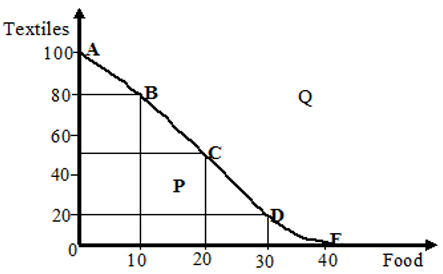THE PRODUCTION POSSIBILITY CURVE – PPC
CONTENT
- Definition of Production Possibility Curve
- Conditions that May Cause the Outward Shift of Production Possibility Curve
Definition of Production Possibility Curve
The production possibility curve (PPC) is a graphical representation of the possible combinations of two commodities that can be produced in an economy given her level of technology and the efficient utilization of all available productive resources. Production possibility curve may also be referred to production possibility frontier, production possibility boundary, production indifference curve or production transformation curve. The production possibility curve analysis is based on a number of assumptions including:
- That only two classes of commodities are produced in an economy.
- That all productive resources are being fully employed or utilized.
- That the resources meant for production are scarce or limited.
The production possibility curve is a tool used to solve economic problems of allocation of resources and choice in terms of what, how and for whom to produce.
There are some possible options in the use of available resources for production as illustrated in the table and graph below:
Production Possibility Table: For Food Crops and Textiles
Production Possibility Curve

The possible combinations/options are:
A – All resources are concentrated on the production of textiles and no food.
- NEW: Download the entire term's content in MS Word document format (1-year plan only)
- The complete lesson note and evaluation questions for this topic
- The complete lessons for the subject and class (First Term, Second Term & Third Term)
- Media-rich, interactive and gamified content
- End-of-lesson objective questions with detailed explanations to force mastery of content
- Simulated termly preparatory examination questions
- Discussion boards on all lessons and subjects
- Guaranteed learning